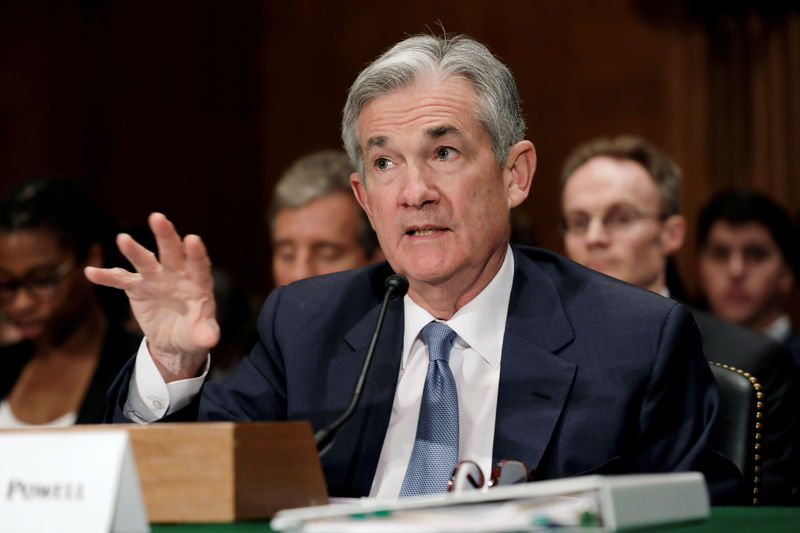Investing.com -- The Federal Reserve looks set to kick the rate-hike can down the road in June, but is unlikely to pick it up, Morgan Stanley says, as incoming economic data won’t support a restart, keeping the central bank on an extended pause before a cut in Q1 next year.
“We continue to see the Fed on hold at the June meeting, and think the bar will be too high for the Fed to resume hiking,” Morgan Stanley said in a Friday note. “We continue to see the Fed on extended hold with the first cut in 1Q24.”
The Making of a June Skip
The growing expectations for the Fed to pause in June come even as Friday’s payrolls report showed far more jobs were created in May than economists had expected.
The numbers from the payroll report, also referred to as the establishment survey, were “undeniably strong,” {{Morgan Stanley says}}.
But weakness in the household survey showing jobs fell by 310,000 in June, the “unusually large” increase in the unemployment rate, and the slowing in labor income support a pause in June, it added.
But not everyone agrees . . . Scotiabank Economics said the case for a June hike “remains solid, … adding that expectations the Fed would be more focused on the uptick in unemployment is “pure rubbish.”
The uptick in unemployment was driven by a 130,000 rise in the size of the labor force and weakness in the less accurate household survey. “Those numbers are pure statistical noise,” it added.
Still, the case for a pause next month was strengthened after Fed Governor and vice chair nominee Philip Jefferson and Philadelphia Federal Reserve President Patrick Harker signaled earlier this week the Fed could skip hikes at the June meeting to assess incoming data.
Both voting Fed-members, however, stressed that a potential skip on hikes wouldn’t imply that the Fed’s tightening cycle had come to an end.
While markets appear to be taking the Fed at its word, with pricing still showing a July hike remains in play, {{0|Morgan Stanley isn’t so sure. “After the June meeting, we think the hurdle to resume hiking only increases.”
The Potential Hop Into a Prolonged Pause
Between the June and July meeting, the incoming data will be sparse and aren’t likely to meet the high bar to show a definitive re-acceleration in the labor market and the pace of inflation.
“It would take a 0.7% monthly increase in core-core services in June for the trend pace to reaccelerate, and similarly a payroll print greater than 200,000,” Morgan Stanley says, forecasting both measures to slow in June.
June CPI inflation is expected to show deceleration in core services ex-medical, ex-housing, on both a month-on-month basis and three-month annualized trend basis to 0.29% and 3.36% respectively, while the June payrolls is seen slowing to 180,000, resuming a slowdown in the three-month moving average, it added.
The expected slowing in the labor market will likely dent wage growth and put the consumer and economy in the crosshairs at a time when savings are running out, adding further ammunition for the Fed to persist with a pause.
The $2.2 trillion in excess savings that was on consumer balance sheets during the early days of the recovery … is down to $822 billion, according to Jefferies.
The outlook for consumer spending, which makes up about two-thirds of economic growth, remains “quite bleak in our view because of this balance sheet fatigue,” it added.
As the incoming data keeps the Fed on pause for July, the central bank’s penchant for inertia on monetary policy, suggests it’ll likely remain on pause.
“The FOMC tends to operate under the law of inertia, once it stops hiking, it will be difficult to resume, especially in the very next meeting,” {{Morgan Stanley said}}.
Recent history adds credence to the claim of “Fed inertia.”
It wasn’t too long ago that the Fed was dragging its heels, refusing to withdraw extraordinary monetary policy and acknowledge signs that inflation wasn’t transitory.
It took months for the Fed to eventually turn off the liquidity spigot, and what followed was a game of catch-up as the central bank’s unleashed the fastest pace of rate hikes in four decades to rein in inflation.
An Eventual Jump to Cuts in Q1’24?
The Fed will eventually cut rates starting in first-quarter 2024, Morgan Stanley estimates.
But bets on a cut have shifted around so much, and Q1 is some ways off with a slew of data still due, suggesting that forecasting the pivot is now almost expected to come with a side order of mea culpa.
In the aftermath of the banking turmoil, markets were forecasting a pivot to a cut by the summer, but that was pushed out to the fall and now bets on a pivot by year-end are hanging by a thread, if not already priced out. The current consensus is now more in line with the consistent message from the Fed that rate cuts aren't on the table this year.
